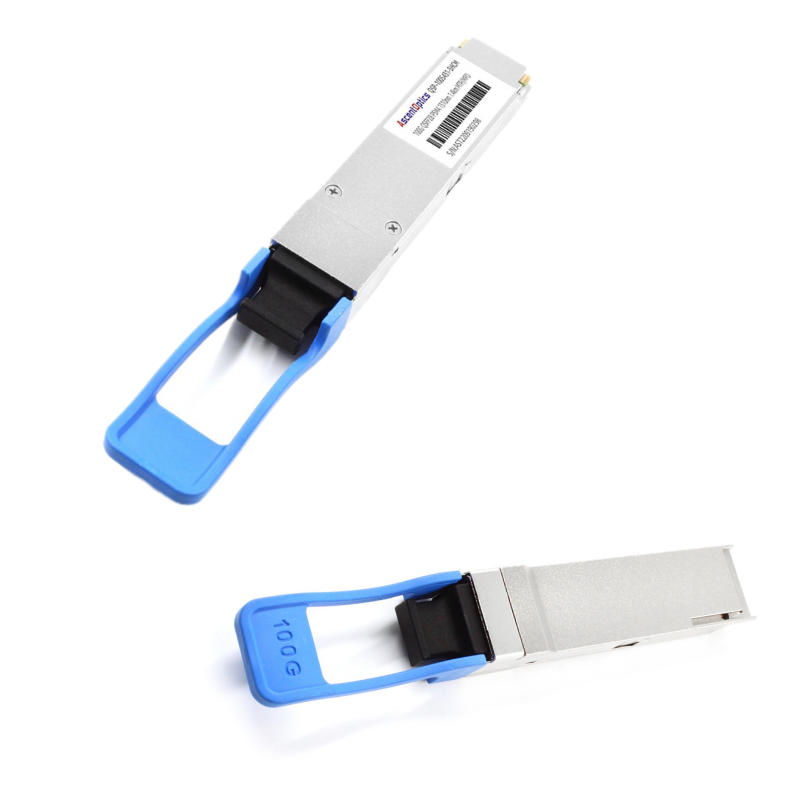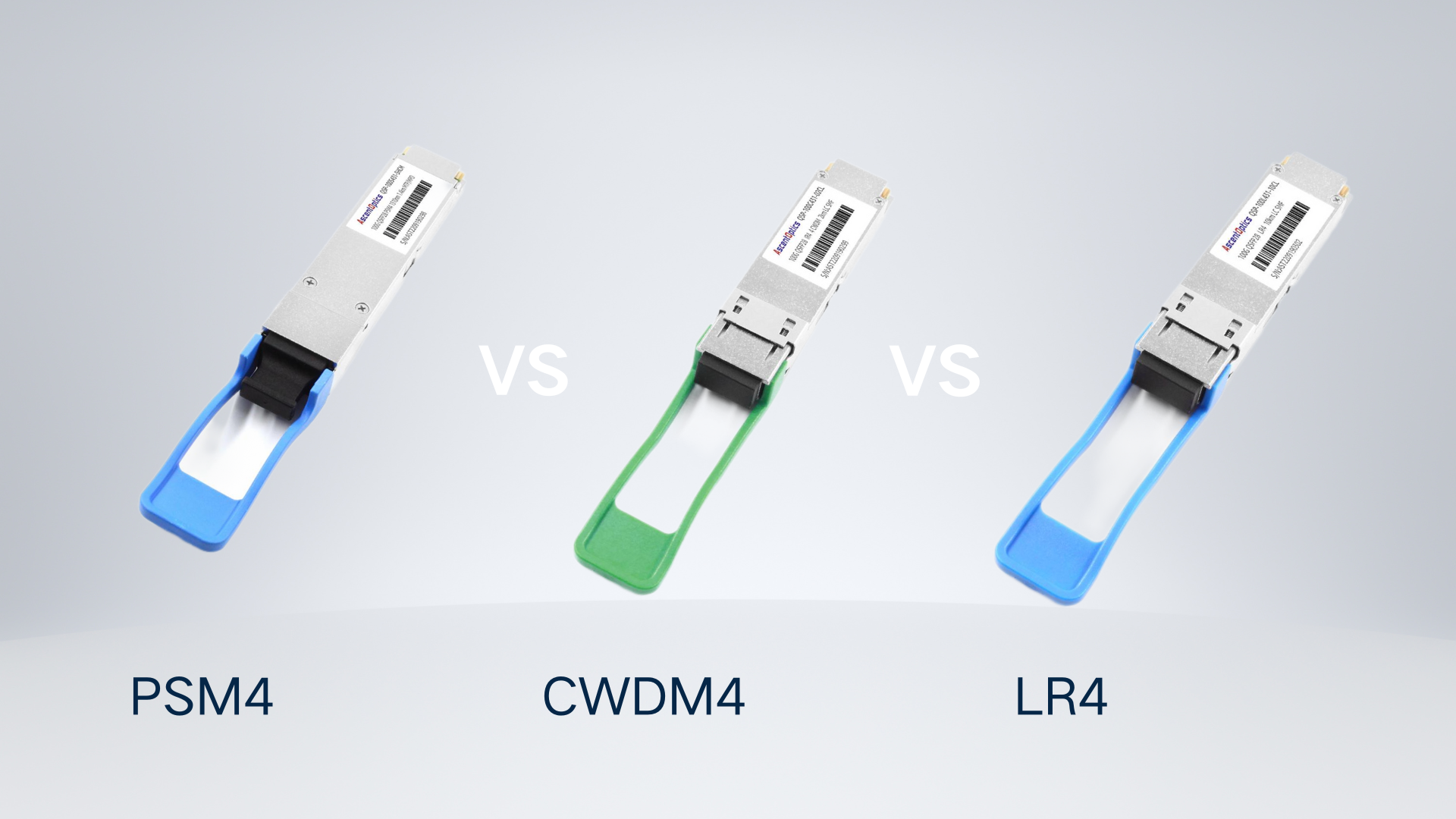As the demand for high-bandwidth, low-latency connectivity continues to surge in data centers and enterprise networks, 100G Ethernet has become a cornerstone of modern network infrastructure. In this context, the QSFP28 PSM4 optical transceiver stands out as an ideal solution, offering cost-effective performance, medium-range transmission capabilities, and flexible deployment options.
This comprehensive guide delves into the technical principles, key features, applications, and trade-offs of the QSFP28 PSM4, highlighting its critical role in 100G networks. Whether for data center interconnects (DCI), high-bandwidth architectures, or seamless migration from 25G to 100G, the QSFP28 PSM4 demonstrates exceptional adaptability and reliability. Through this article, you will gain insights into efficient deployment and maintenance practices, along with answers to frequently encountered questions in real-world implementations.
What is QSFP28 PSM4?
The QSFP28 PSM4 (Quad Small Form-factor Pluggable 28 Parallel Single Mode 4) optical transceiver is a high-speed module designed for 100G Ethernet applications. It leverages four parallel single-mode fiber lanes, each operating at 25 Gbps, to deliver a total bandwidth of 100 Gbps. Unlike multimode fiber solutions, PSM4 uses single-mode fiber to enable longer transmission distances, typically up to 2 kilometers, making it ideal for specific high-bandwidth scenarios.

Key Features of QSFP28 PSM4
QSFP28 PSM4 modules are designed with several defining characteristics:
How QSFP28 PSM4 Works
The PSM4 module transmits data over four parallel single-mode fiber pairs (eight fibers total—four for transmit, four for receive). Each lane operates independently at 25 Gbps, using a 1310 nm laser to transmit signals. The module employs non-return-to-zero (NRZ) modulation and integrates a gearbox to align data streams, ensuring efficient data transfer with minimal latency.
QSFP28 modules, including PSM4, are critical in modern networking for supporting the exponential growth of data traffic in data centers and enterprise networks. The PSM4 variant addresses the need for cost-effective, high-speed connectivity over single-mode fiber, offering a balance between performance and affordability for 100G Ethernet deployments. Its ability to integrate seamlessly into existing infrastructure makes it a cornerstone for scalable network architectures.
The QSFP28 PSM4 Optical Transceiver Plays a Vital Role in 100G Ethernet, Primarily in the Following Aspects:
Supports a wide operating temperature range from -40°C to 85°C, making it suitable for hyperscale data centers with high-density computing and demanding environments such as the 5G fronthaul market.
Features semi-sealed packaging and temperature compensation design to ensure stable operation under harsh conditions like high temperature and humidity.
Supports transmission distances up to 10 km, bridging the cost-performance gap between SR4 (short reach) and LR4 (long reach).
Compared to LR4, PSM4 uses parallel single-mode fiber (PSM) technology with four independent channels. While it requires 8-core fiber, the total cost within 2 km is lower than CWDM4/LR4, making it ideal for data centers with abundant fiber resources.
COB (Chip-on-Board) optical engine design improves integration and reliability, with power consumption under 4W.
Supports error-free transmission, meeting the low-latency and high-stability demands of high-frequency trading data centers.
Supports both 100G-to-100G direct connections and 25G-to-100G breakout configurations via MTP/MPO-LC breakout cables, enabling smooth upgrades within existing network infrastructures.
Internal interconnects in large-scale data centers, such as spine-leaf architectures.
High-bandwidth use cases in 5G fronthaul/midhaul networks.
With its industrial-grade reliability, cost-effective medium-distance transmission, and flexible compatibility, the QSFP28 PSM4 transceiver has become a key solution in 100G Ethernet deployments where harsh environments and moderate transmission distances are critical.
In the realm of 100G optical modules, QSFP28 PSM4, CWDM4, LR4, and ZR4 are some of the most common types. Each has its advantages in terms of transmission distance, cost structure, and ideal use cases. Below is a summary comparison of these modules.

Summary: PSM4 and CWDM4 are best for medium-range use, while LR4/ZR4 are necessary for longer distances.
Summary: CWDM4 is the most cost-effective for ≤2km applications; LR4/ZR4 are more expensive but essential for long-distance transmission.
Summary: CWDM4 offers a balanced combination of cost, performance, and ease of deployment for 2km-range applications. PSM4 is ideal for high-density scenarios, while LR4/ZR4 cater to long-distance requirements.
Choosing the right optical module is crucial for optimizing your 100G network. CWDM4 strikes a balance between cost and performance for 2km applications, while PSM4 offers lower costs but with specialized cabling needs. For long-distance transmission, LR4 and ZR4 are the go-to options despite the higher cost.
For more information on industrial-grade modules or high-density deployment strategies, feel free to leave a comment or contact us for more technical resources.
QSFP28 PSM4 is widely used in data center interconnects, where high-speed, medium-range connections between facilities are critical. Its 2 km reach supports inter-building links without requiring expensive wavelength-division multiplexing solutions.
PSM4 modules excel in spine-leaf architectures, enabling high-bandwidth, low-latency connections between switches. Their parallel lane design supports the dense connectivity required in modern data center networks.
For point-to-point 100G connections, PSM4 offers a straightforward solution, delivering full 100 Gbps bandwidth over single-mode fiber without complex signal processing, ideal for direct switch-to-switch links.
PSM4 supports breakout configurations, allowing a single 100G port to connect to four 25G ports. This flexibility aids organizations transitioning from 25G to 100G networks, leveraging existing infrastructure while scaling bandwidth.
QSFP28 PSM4 stands out for its efficiency and flexibility in modern data centers. It is particularly attractive for medium-distance 100G links due to its balance of performance and cost. However, to fully leverage its benefits, network teams must also account for certain deployment considerations. Below is a breakdown of its key advantages and potential challenges.
(1)Cost-Effective
Simple optical design without wavelength multiplexing makes PSM4 modules more affordable compared to CWDM4 and other WDM-based solutions.
(2)Medium-Range Support
Supports transmission distances up to 2km over single-mode fiber (SMF), making it suitable for both intra- and inter-data center connections.
(3)Scalability
PSM4 uses four parallel lanes, which allows for flexible breakout configurations (e.g., 4x25G), enabling various network topology designs.
(4)Low Latency
Parallel optical channels reduce the need for complex signal processing, resulting in lower transmission latency.
(1)Higher Fiber Count
Requires 8-fiber MPO cabling (4 transmit, 4 receive), which increases cabling complexity and may not align with existing LC-based infrastructure.
(2)Strict Cleanliness Requirements
Single-mode MPO connectors are highly sensitive to dust and contamination. Regular cleaning and inspection are essential for stable performance.
(3)Compatibility Check
When using third-party or non-OEM PSM4 modules, compatibility with network equipment may require additional configuration or validation testing.
QSFP28 PSM4 delivers an excellent balance of cost, performance, and scalability for 100G applications within 2km. Its low-latency performance and breakout capability make it especially well-suited for high-density data center environments. However, network engineers should carefully consider fiber cabling infrastructure, cleanliness protocols, and vendor compatibility during planning and deployment.
By understanding both the advantages and limitations of PSM4, organizations can make informed decisions and build more efficient, future-ready networks.
A: Yes, PSM4 modules support breakout configurations, allowing a 100G port to connect to four 25G ports using an MTP-to-LC breakout cable, ideal for high-density server connections.
A: Yes, cleaning MTP/MPO connectors is essential, as single-mode fibers are highly sensitive to contamination. Dust or debris can cause signal loss or errors, impacting performance.
A: Using third-party PSM4 modules may not void equipment warranties, but it depends on the vendor’s policy. Always verify with the equipment manufacturer to ensure compliance.
A: PSM4 uses four parallel single-mode fibers, requiring eight fibers total, and supports up to 2 km. CWDM4 multiplexes four wavelengths onto a single fiber pair, using only two fibers, but is more complex and costly. PSM4 is preferred for cost-sensitive, medium-range applications.